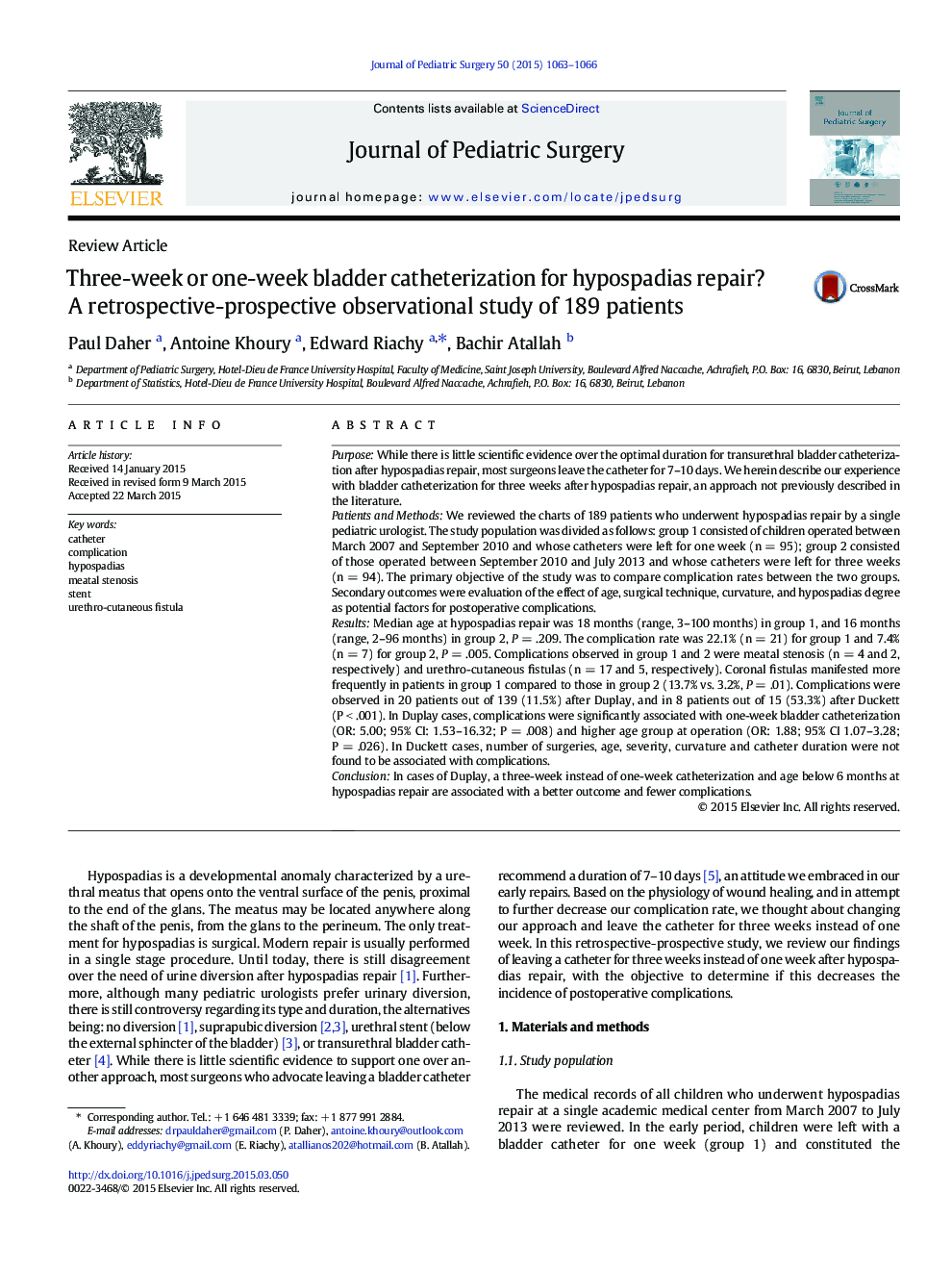| کد مقاله | کد نشریه | سال انتشار | مقاله انگلیسی | نسخه تمام متن |
|---|---|---|---|---|
| 4155069 | 1273735 | 2015 | 4 صفحه PDF | دانلود رایگان |
PurposeWhile there is little scientific evidence over the optimal duration for transurethral bladder catheterization after hypospadias repair, most surgeons leave the catheter for 7–10 days. We herein describe our experience with bladder catheterization for three weeks after hypospadias repair, an approach not previously described in the literature.Patients and MethodsWe reviewed the charts of 189 patients who underwent hypospadias repair by a single pediatric urologist. The study population was divided as follows: group 1 consisted of children operated between March 2007 and September 2010 and whose catheters were left for one week (n = 95); group 2 consisted of those operated between September 2010 and July 2013 and whose catheters were left for three weeks (n = 94). The primary objective of the study was to compare complication rates between the two groups. Secondary outcomes were evaluation of the effect of age, surgical technique, curvature, and hypospadias degree as potential factors for postoperative complications.ResultsMedian age at hypospadias repair was 18 months (range, 3–100 months) in group 1, and 16 months (range, 2–96 months) in group 2, P = .209. The complication rate was 22.1% (n = 21) for group 1 and 7.4% (n = 7) for group 2, P = .005. Complications observed in group 1 and 2 were meatal stenosis (n = 4 and 2, respectively) and urethro-cutaneous fistulas (n = 17 and 5, respectively). Coronal fistulas manifested more frequently in patients in group 1 compared to those in group 2 (13.7% vs. 3.2%, P = .01). Complications were observed in 20 patients out of 139 (11.5%) after Duplay, and in 8 patients out of 15 (53.3%) after Duckett (P < .001). In Duplay cases, complications were significantly associated with one-week bladder catheterization (OR: 5.00; 95% CI: 1.53–16.32; P = .008) and higher age group at operation (OR: 1.88; 95% CI 1.07–3.28; P = .026). In Duckett cases, number of surgeries, age, severity, curvature and catheter duration were not found to be associated with complications.ConclusionIn cases of Duplay, a three-week instead of one-week catheterization and age below 6 months at hypospadias repair are associated with a better outcome and fewer complications.
Journal: Journal of Pediatric Surgery - Volume 50, Issue 6, June 2015, Pages 1063–1066
